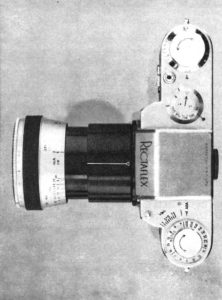
Earlier this week, I published a full review of an Alpa Alnea 7 that I had picked up last fall. With that camera came three lenses, a Kern-Switar 50/1.8, an Angenieux telephoto and a Kamerabau-Anstalt-Vaduz Kilfitt-Makro Kilar D 4cm f/2.8 lens.
I was immediately drawn to the 2 inch minimum focus on the Makro-Kilar lens, but I did not yet realize how special of a lens this was. Designed by prolific camera and optical designer Heinz Kilfitt in München, Germany, the Makro-Kilar was built in the tiny country of Liechtenstein by Kamerabau-Anstalt-Vaduz. The lens is most often found with an Exakta mount, but also came with mounts for Alpa, Praktina, Mecaflex, Rectaflex, and Pentacon (M42).
I recently found three different articles about this lens, two each published in 1955 issues of Popular and Modern Photography, and then a single page article to announce the faster f/2.8 version in the March 1958 issue of Pop Photo.
The first article, from March 1955 starts off with this quote:
A lens that will take normal, close-up, and wide-angle pictures without requiring supplementary attachments is, to say the least, a starting and almost unbelievable innovation. The idea of a complete all-in-one lens with which one can be prepared for any type of photography is an irresistible thought.
These words almost perfectly summarize the Makro-Kilar and it’s ability to go from a very good semi-wide angle lens to a really great macro lens with just a twist of your wrist. This ability was just as cool in 1955 as it is today.
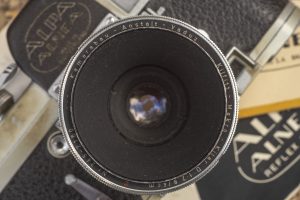
The Makro-Kilar is a 4-element compound triplet of Tessar design and is built with high-quality German Lanthan glass to deliver maximum sharpness and detail. When it first made it’s debut in 1955, it had a maximum aperture of f/3.5, but in 1958 was revised to f/2.8. The 40mm focal length was likely chosen to keep the lens small, since the large helical would need a lot of space to accommodate the wide range of focus distances.
There are two variations of Makro-Kilars, the D (double extension), and E (extension) models. Optically, the two are identical, the only difference being in the mount and how close you can get. The D focuses down to 2″, the E to 4″.
The type D is what I had, and with the lens focused to infinity, it is relatively compact, looking much like any other prime lens you’ve ever seen, but turn the focus ring down to the minimum focus distance of 2 inches (5 cm), and things get rather “phallic”.
The barrel of the lens has four different scales, all for different purposes. There’s focus distances in metric and inches/feet, a reproduction scale from 1.1:1 to 1:24, and an exposure compensation scale which is used as a guide to boost exposure when working up close. The lens has a rubber coated ring for comfortable focus and has a preset aperture, so it does not support automatic diaphragms as seen on other lenses of the era. The first glass element is recessed more than an inch behind the outer ring of the lens which acts as a built in sun shade which is good because there are no threads on the lens for a traditional screw in shade or filters. If you want to use a filter with the Makro Kilar, you need an optional Series VII filter adapter that presses into the front of the lens which I do not have.
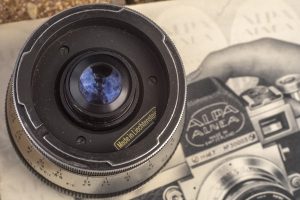
Although designed in Germany, it was assembled in Liechtenstein and imported to the United States by Kling Photo Corporation of New York. In 1955, the retail price for the f/3.5 type E was $89.95 and the D was $114.95. In 1958 when the f/2.8 versions were released, the prices for the types E and D increased to $119.50 and $139.50. Each of these prices compare to $865, $1100, $1060, and $1240 today.
I was really impressed by what this lens could do on film, but I was even more curious to see what it could do on my digital mirrorless, so I promptly ordered an Alpa -> Fuji X-mount adapter on Amazon and mounted it to my Fujifilm X-T20. The sharpness and ease of switching from infinity focus to extreme close-ups was a game changer for me. Especially when it came to shooting the “beauty pics” of the cameras for this site.
Ever since late 2015, I have been using some type of classic film lens for every picture of a camera I’ve reviewed. My thought on this was that although I was shooting digital images, there would be a bit of “street cred” by using a classic film lens. I bounced around between various Nikkor lenses and M42 screw mount lenses, before eventually settling on an Asahi Super-Takumar 55mm f/1.8 lens from my Pentax Sv. Not only is that an incredibly sharp lens, but I liked that it had an “Auto/Man” switch that allowed me to flick the lens between wide open for sharp focusing, but also to stop it down quickly for shots.
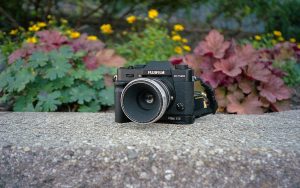
I used to shoot a Nikon D7000 DSLR which when using an M42 lens, loses infinity focus, but gives a slight macro effect. But sometimes I wanted to get closer, and for that I’d have to keep switching M42 extension tubes. With the X-T20, I overcame this with an M42 Helicoid adapter that allowed me to get closeups without having to use extension tubes, but it wasn’t elegant as I’d have to switch between the lens’s focus ring and the helicoid’s ring.
With the Makro-Kilar, I found the perfect compromise as I could focus as close as I wanted with a single focusing ring. Not only that, but the slightly wider 40mm focal length improved depth of field compared to the 55mm length on the Takumar. Both my Nikon D7000 and Fujifilm X-T20 cameras use APS-C crop sensors which multiply the focal length by 1.5x, but still, a 60mm focal length is easier to work with than 82.5mm.
Upon seeing the first results from my Makro-Kilar to digital combination, I was immediately impressed and that lens has since become my go to lens for camera beauty shots. Any review that I’ve posted on this site where I took the pictures from roughly September 2018 or later have been shot with the Makro-Kilar. It is a perfect classic lens and camera combination and meets all of my needs. I’ll sell the Alpa camera it came with before I’d ever part with this lens.
Here are a couple of sample shots done with this lens and camera combination, but if you want to see more, almost every review I’ve posted in the past 6+ months has images shot with this lens.
In this, the 40th edition of Keppler’s Vault, I am trying something new with the article. Instead of a gallery of JPG images of each page of the article that some readers have reported are difficult to read, I am presenting them all together in a single PDF file. You can open this PDF full size in your browser, or download it to your device using the link in the bottom toolbar if you wish.
Please let me know what you think of this change as I can always go back to the JPG gallery.
All scans used with permission by Marc Bergman, 2019.

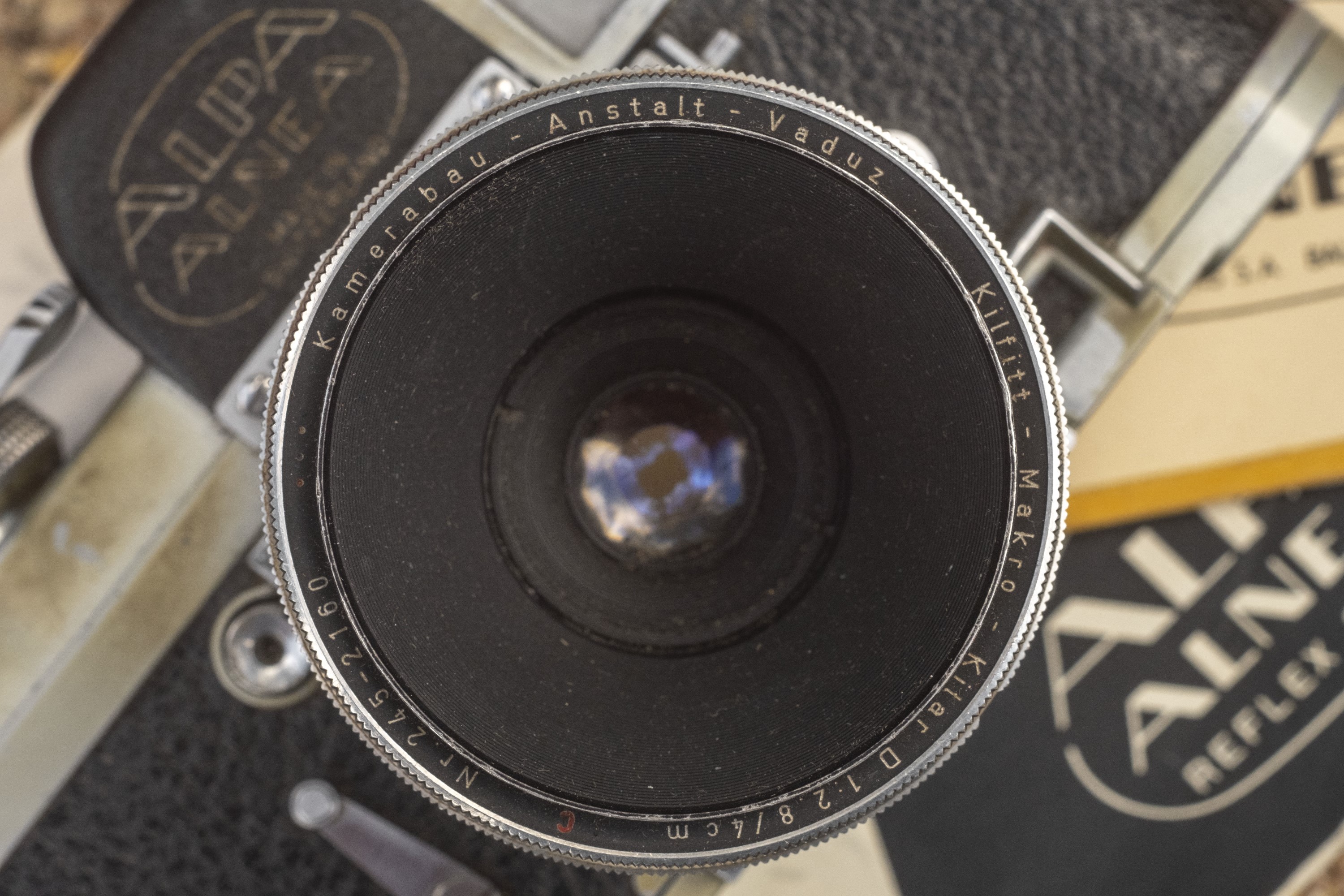
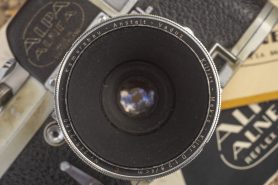
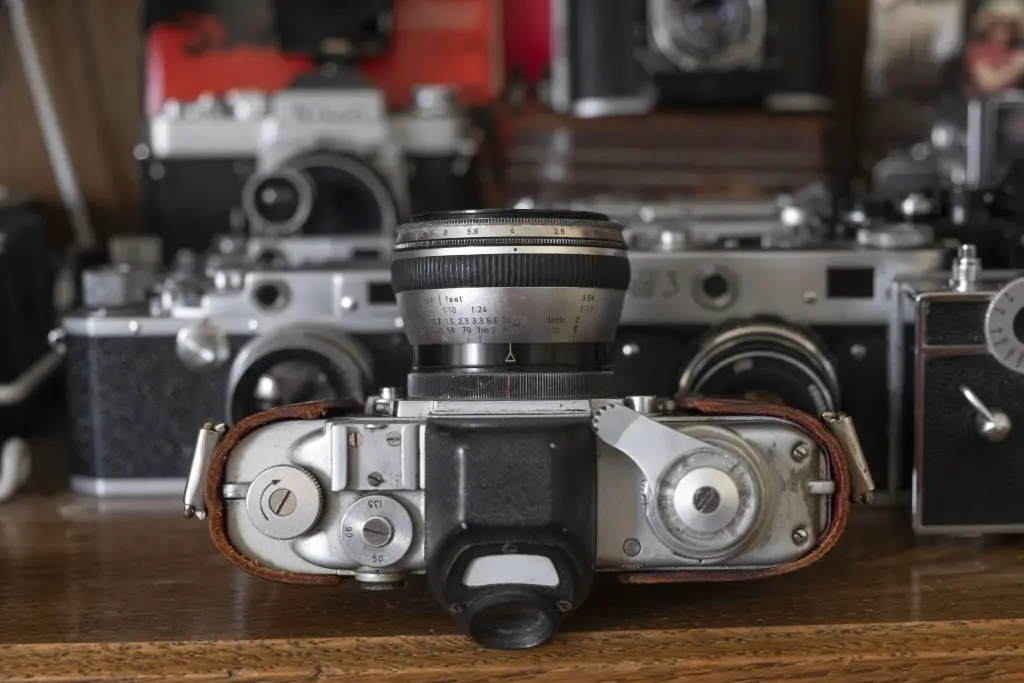
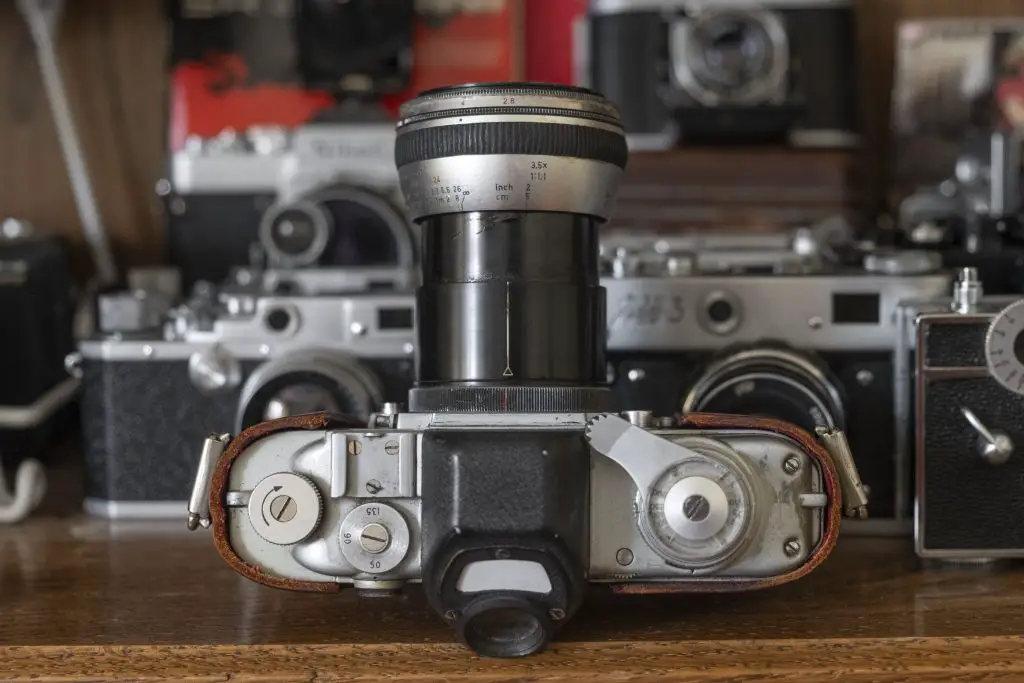








The pdf download feature is much appreciated – a blessing for geezers with old eyes. I agree wholeheartedly about the Makro-Kilar’s utility and quality, having used one a few decades ago on an Exakta VXIIa for detailed b&w close-up work. The challenge today is finding a good example of this lens with the M42 mount, mandatory for use on DSLRs. Asahi made a very well-finished M42/PK adapter which I use with my K3 and K1 bodies. My case of GAS is severe enough already without adding a Fujifilm X body to the list, even though its shorter flange focal distance is verrrry appealing ….
I have recently acquired a 300mm Kilfitt lens that has a Eclair 35mm Camerette motion picture camera adapter. It appears to work quite well on the camera. Being a new find, I am wondering as to the possible application of the 40 mm to the movie camera as well as if the M42 mount is what I have in the adapter.
Ed Johnson
Ed, I am sure it is possible to adapt that 40mm mount to M42, but my guess is that it would be a custom application. In theory, as long as you can keep light out and maintain the correct flange distance, any lens can be adapted to any camera. It’s just a matter of finding the right adapter. I wish I had more specific info for you however, but good luck in your search!
Mike,
Thanks for the PDF version of the Keppler’s Vault article! Much appreciated!
I had the good fortune today to stumble onto an M42 mount version of the Kilfitt Makro Kilar E f3.5 lens at a thrift store at an embarrassingly low price! (Never fear, I got over my embarrassment quickly)
Haven’t had time to shoot with it, but promptly ordered a M42 to Nikon F mount adapter for my many film and digital Nikons.
I did however immediately mount it on my Pentax Spotmatic to check function and it seems to be in good working order.
Strangely enough, the lens has what appears to be a homemade spacer washer cut out of semi transparent plastic seated on the M42 threads. When I screw it onto the Spotmatic, the focus reference mark tightens up to approximately the 10 o’clock position as you face the camera. When I remove the spacer and remount the lens, the focus reference mark then tightens at approximately the 2 o’clock position. Very strange.
The threads engage smoothly, so there is doubt it is an M42 mount, but the out of kilter focus reference mark puzzles me.
Any possible insights as to what might cause this? I’ve never had an M42 mount lens tighten up this far out of alignment from the traditional 12:00 Noon position. Were there custom focus shims for each camera sold with the lens?
In any event, I’ll have to check the infinity focus tomorrow when the sun comes up.
Thanks for the article! It came in very handy when looking for more information on this lens.
Frank